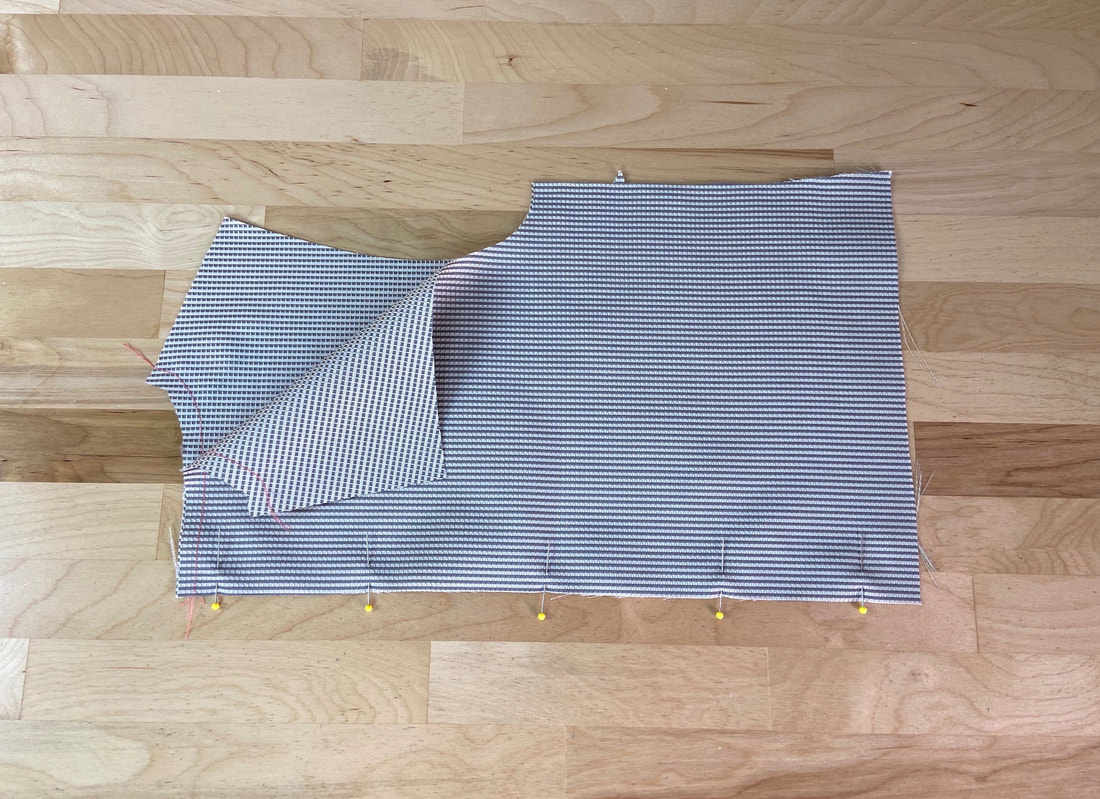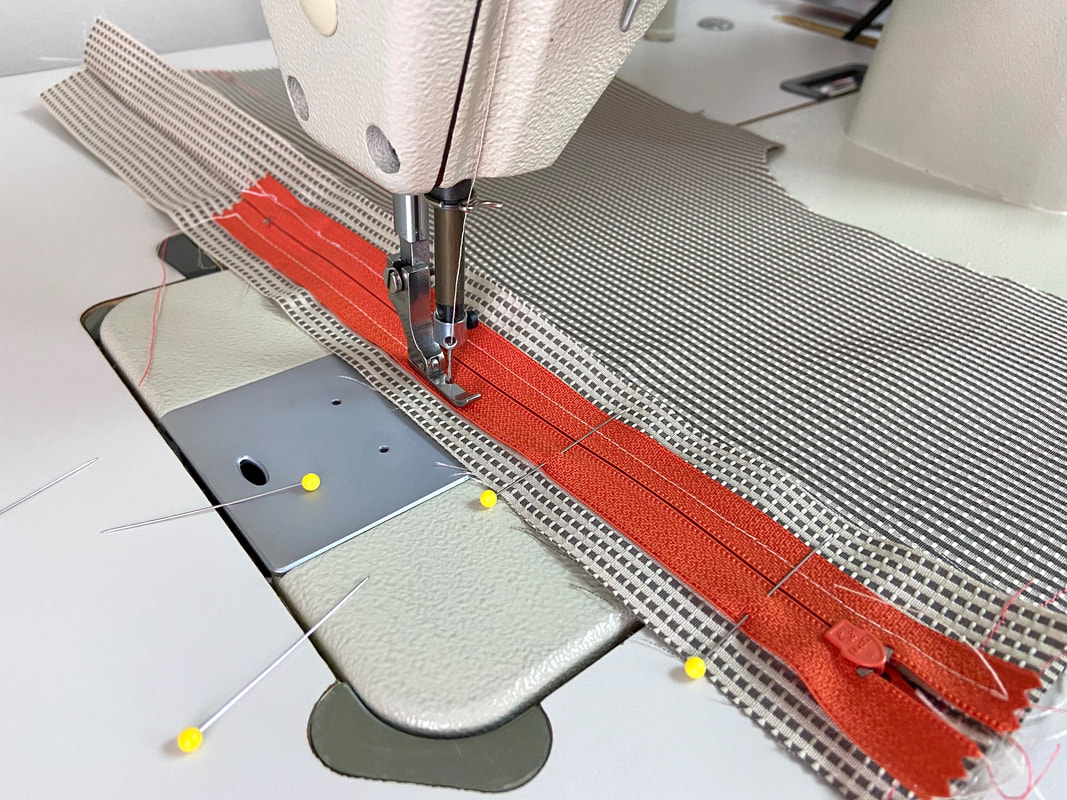Mini Tutorial: How To Sew A Centered Zipper Application
1. Align the seam edges (housing the zipper) with face sides touching as you would any conventional seam. Insert pins horizontally to secure the edges together.
2. Using the zipper, mark the bottom of the zipper opening using the zipper's bottom stop as a guide. Use tailor's chalk or a quilting pencil to mark directly on the seam allowance edge as pictured above.
3. Starting at the bottom, machine stitch the seam at the designated seam allowance. In this case the seam allowance is 1". When arriving at the marked location, backstitch to reinforce, and switch your stitch setting to the longest stitch available on your sewing machine (known as a machine basting stitch). Continue stitching following the same seam allowance until you reach the top of the seam. The machine basting should only cover the zipper opening area.
4. Using a seam ripper, clip every 5-6 stitches along the basting only (zipper area above the backstitch).
5. Working on the wrong side of the seam, iron the seam allowance layers open being careful not to accidentally pull the seam edges apart at the clipped area.
6. Open the zipper all the way, and align the left zipper tape portion with the left seam allowance layer such that the zipper teeth fall directly on the seamline. The zipper should be placed face down and the two layers (tape and seam allowance) pinned perpendicularly as pictured above.
Note: If you don't quite feel comfortable sewing zippers yet, it helps to replace the pins with hand basting for extra security during the machine stitching process. For added comfort, move all garment layers away from the seam - you'll only need to stitch through the seam allowance edge and zipper tape.
Note: If you don't quite feel comfortable sewing zippers yet, it helps to replace the pins with hand basting for extra security during the machine stitching process. For added comfort, move all garment layers away from the seam - you'll only need to stitch through the seam allowance edge and zipper tape.
7. Starting from the bottom, machine stitch down the center of the zipper tape using a zipper presser foot.
8. Close the zipper fully and align the unstitched zipper tape portion to the other seam allowance layer underneath. Insert pins horizontally to secure the edges together. The zipper should lay completely flat against the two seam allowance layers. Again, it helps to move the garment layers out of the way during the alignment and pining process.
9. Starting from the bottom again, stitch down the center of the zipper tape using a zipper presser foot. Remove each pin as you approach it.
10. Flip the entire zipper application on its right side, and hand baste the exact placket lines on both sides of the seam. This hand basting stitch should be applied through the zipper tape and seam allowance layers underneath and provide an exact guide to be used in the topstitching process below.
11. Starting at the bottom of the zipper closure and using a zipper presser foot again, stitch horizontally from the seamline outward, then pivot the stitch vertically following the hand basting as a guide. Repeat the topstitching process on the other side of the seam/zipper to achieve two equally-positioned plackets.
12. Once complete, remove all temporary hand basting stitches using a seam ripper.
13. To release the zipper opening, simply pull the seam edges apart- this will release the clipped machine basting exposing the zipper underneath. Don't forget to remove any loose threads that are stuck within the seam edges.
The end result should be a zipper that is fully covered by the abutting seam edges featuring two equally-spaced, evenly-applied topstitched plackets, one on each side of the zipper opening.
















